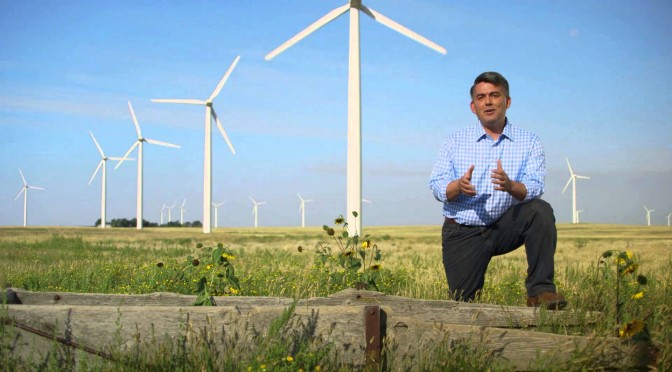The 2014 mid-terms have been called a “wave” and a “landslide.”
Clearly they were good for Republicans and in particular their control of the agenda in the U.S. Senate.
But what does it mean for energy? As many major media outlets noticed, energy was on the ballot more than it has been in recent elections with numerous ads in many states on the issue.
The standard narrative is that Democrats generally lost so it was a loss for issues they support, such as climate action and clean energy incentives. Is that really the case?
First, how did supporters of clean energy do? In some cases a supporter of clean energy lost, but was replaced by another supporter. Senator Tom Harkin (D-IA) retired and could have been replaced by Congressman Bruce Braley (D-IA) who has supported wind and clean energy tax credits, yet he lost to Republican Joni Ernst. However, Ernst publicly supported the wind and biofuels tax incentives. Surprising? Not when you look at the popularity of wind energy in Iowa. In Colorado, wind PTC champion and Democratic Senator Mark Udall lost to Republican Cory Gardner. Yet Gardner cut a signature advertisement at a wind farm and expressed support for clean energy including the wind production tax credit (PTC). Again, not surprising given the popularity of wind in Colorado.
These examples are also telling as indicators of the next Presidential election. Jim Messina, Campaign Director for Obama for America, says that an important driver of Obama’s success in key battleground states of Iowa and Colorado was Obama’s support for the wind PTC and Romney’s opposition. When Romney opposed the PTC he was roundly criticized by longtime Governor of Iowa Terry Branstad, Iowa Republican Senator Grassley, and other Iowa Republicans. Ernst and Gardner seemed to have learned a lesson from Romney’s loss: to win in purple states that have wind energy, you need to support wind.
Senate Democrats and the President have prioritized clean energy incentives and passing the PTC. However, so have 8 Republican Senators. And the number of Republican supporters of wind in Congress grew with Tuesday’s election results. So likely future Senate Majority Leader McConnell and House Speaker Boehner will be hearing from their caucuses about why it’s important to support wind energy. Both sides have expressed interest in working together to get things done during the 114th Congress. It looks like it will be easier for the House to pass moderate bills in the 114th Congress than it has been in the 113th.
There will be challenges to EPA’s Clean Power Plan coming from Congress clearly. However, major attacks would be vetoed by the President and it is unlikely the veto could be overturned.
Some say it is now an imperative for Congressional Republicans to be productive and work on bills that can pass into law. We are optimistic that this is true.
At the state level, many of the same dynamics played out as the federal level, with very low turnout especially among Democrats. Republicans picked up four Governors and six legislative chambers. In the “windy red states,” wind is supported by many Republican policy makers, so it is hard to generalize about the impacts on important state policies such as Renewable Portfolio Standards. In some states like Colorado and Minnesota, active wind energy supporters won. The wind industry will need to actively ramp up our communications to all of these new members, state and federal, to show the economic development benefits that wind brings their constituents.


